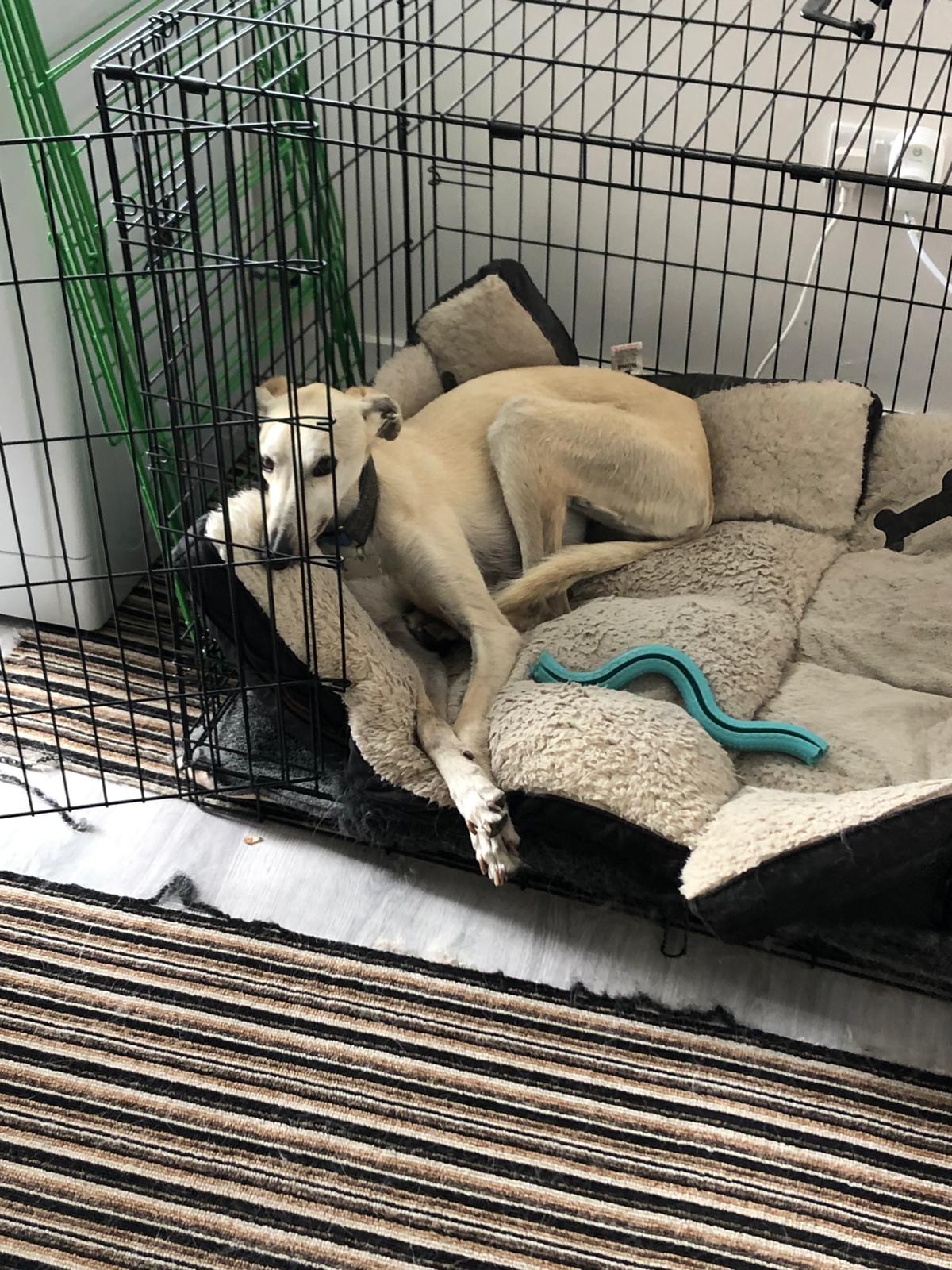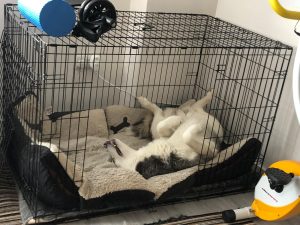Choosing a crate
There are many different crates on the market, from fabric, easy to transport ones to wire collapsible ones. Be sure to choose one that you can take apart, easily set up and carry. The most important thing is to choose a size suitable for your dog. This means that it is big enough and comfortable enough for your dog to walk into, lie down, stand up, stretch out and turn around in easily. You can choose a specially designed cushy bed for crates or line it with blankets or vetbed if you choose to. You can also cover the sides with a sheet or blanket for extra security for your dog too.
Crate Training
Remember to keep any kind of training short and fun and never, ever punish your dog by locking them in the crate. Crate training should take place gradually by lengthening the time your dogs spends in the crate over time. Start the crate training by throwing tasty treats in and around the crate to encourage your dog to go in and out and start smelling the crate. You can assign a command or phrase as you’re throwing treats into the crate, such as “bed”,”crate”, “get into bed” and be sure to use lots of encouragement and high pitch tones each time your dog goes in and out of the crate. Once you think they feel comfortable going in and out of the crate, throw the next tasty treat or chew right to the back of the crate for them to retrieve. This is showing them that each time they enter the crate, it has been a positive experience and they’ve been rewarded with praise and a reward for entering the crate.
Once your dog gets an idea for what the crate is about, they may start going in and out themselves at treat time. It is time to start getting them used to the idea of spending time in the crate with the door closed. Start by feeding them every meal or chew time in the crate. If you close the crate door while they eat meals in the crate, when they finish, start dropping treats into them when they are calm and quiet. If they fret or cry, let them out, it’s important that they only have positive experiences in the crate. Once they’re remaining calm and relaxed for a short period in their crate with the door closed after a meal, you can open the door and place in a food-releasing toy or chew for them to enjoy. This way they’ll learn that someone reaching into their crate is a good thing and they’ll be rewarded for staying inside for even longer.
Start to give them long lasting chews or tough, filled kong toys or k9 connectables in the crate to help lengthen the time and positive experience they have within the crate with the door closed to give them different opportunities to enjoy spending more time within their crate. When your dog is enjoying themselves inside the crate, start to engage in your own normal day-to-day activity including leaving the room, for short periods to begin with, so they learn that this is okay. You will start to see your dog going in and out of the crate by themselves and seeing the crate as cosy and great place to be, especially if it has a cosy bed. If your dog goes back a step or you feel they are not enjoying their time in the crate, you may need to start again at the beginning with step one.
The most important thing to remember is that your dog has a good time in their crate and it is never seen as a punishment or place to lock them out of the way. You will no doubt see the positivity of using a crate in day to day life and have a happy dog who enjoys spending time in their crate.






